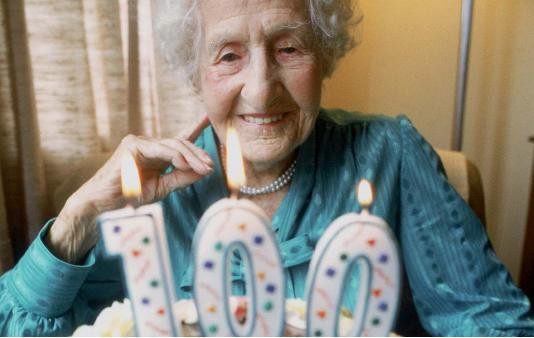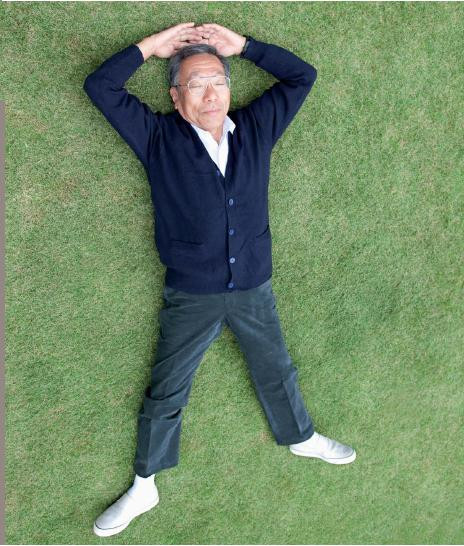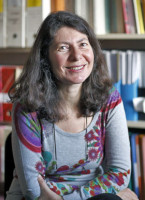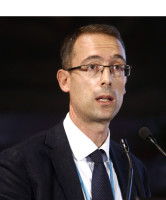Longevity, Ageing and Long-term Care
Healthcare Systems
Healthy Ageing & Longevity
Public Health & Health Policy
Elderly Care & Geriatrics
Cellular Ageing
AXA Projects
France
5-COOP: Relationships between the level of mortality selection and the health status of the oldest old
Headed by Prof. Jean-Marie Robine of the French Institute of Health and Medical Research (INSERM), the Five Country Oldest Old Project (5-COOP)is designed to more fully understand longevity in order to better anticipate the number and health status of the so-called “oldest old” over the coming decades. By surveying representative samples of centenarians in five countries, the project will examine such critical factors as the subjects’ physical, sensory and cognitive capacities, the age at which chronic diseases begin and the frequency of such diseases as well as disabilities and other geriatric conditions, and the relationship between mortality and functional health status.
The five selected countries—Denmark, France, Japan, Sweden and Switzerland—were chosen because they offer high-quality data on mortality and/or health for centenarians, include a relatively high number of centenarians in their
populations, and have excellent research teams. The multidisciplinary teams conducting the research include recognized experts in aging, geriatric medicine, social and preventive medicine, and public health.
In addition to forecasting the demographics of the oldest old, Robine’s team expects to better understand the causes and patterns of the diseases that strike this seldom-studied population and to estimate the risk of dependence and physical or cognitive impairment. By examining health and social needs and the relationship between health and longevity, the results may help policy makers design appropriate public health strategies for the future."
The decrease in old age mortality started in the 1930s in the most advanced countries but it was only noticed in the 1970s. It led to the formulation of three main theories about the expected changes in the health status of the populations, the compression of morbidity, the pandemic of disability, and the dynamic equilibrium. According to the first theory morbidity is compressed at the end of life due to the adoption of healthy behaviors and the hypothesis of strong limitations on longevity. According to the second theory, we are merely keeping the sick people alive longer increasing the prevalence of chronic diseases and disability. According to the third theory we are keeping the sick people alive longer but we are also slowing down the development of the chronic diseases and postponing the onset of disability. However, the most surprising observation during the last decades was the strong decrease in oldest old mortality, leading to an unexpected increase in the number of nonagenarians and centenarians. The previous theories do not help to understand the relationship between the level of mortality selection (how easy or difficult it is to survive to a given age) and the functional health status of the survivors (i.e. the people reaching this given age). This is the new frontier in healthy and active longevity research and it where the 5-Country Oldest Old Project (5-COOP) is going with the help of AXA Research Fund.
Who is Most Likely to Live One Hundred Years?

A close-up at centanarians from five countries
Jean-Marie Robine
Principal investigator of the AXA “5-COOP” project,
Inserm, France
Eminent demographer, Jean-Marie Robine, has just begun a study on the life expectancy and health of the elderly population, or “oldest old”, in France, Switzerland, Japan, Denmark and Sweden. A pioneer project due to its scale.
Japan holds the record for the highest number of centenarians compared to the general population. Since 1990, the number has quadrupled every ten years, reaching 44,449 today. France is in second place with more than 16,000 centenarians. This impressive and unexpected increase in the life expectancy of adults in most developed countries constitutes what Jean-Marie Robine, director of the “Demography and Health” team at the Inserm in Montpellier, calls “the revolution of longevity”. The impact is broad, but many mysteries remain.

Why has the number of oldest old exploded in certain countries? And how does this population experience their considerable age: are they in good form or is their health deteriorating? To find out more, Jean-Marie Robine explored every historical study on the subject in 2008 and observed a striking lack of representative and comparable data. However, he also discovered a few interesting leads: for instance, in Japan, a number of studies carried out a few years apart demonstrated a drastic deterioration in health, with nearly 40% of centenarian women confined to bed.
Two years later, Jean-Marie Robine decided to explore the subject further by launching, with the support of the AXA Research Fund, a large-scale project (“5-Country Oldest Old Project (5-COOP): trade-off between the level of mortality selection and the functional health status of oldest-old survivors”). “5-COOP will begin by painting a portrait of centenarians in France, Sweden, Switzerland, Denmark, as well as in Japan, where there will be two groups – one in Tokyo and one in Okinawa”, explained Jean-Marie Robine.
A multidisciplinary team of nearly 25 scientists is involved in the project and is currently in the midst of publishing their first article (Current Gerontology and Geriatrics Research (2011) based on their analysis of available data. They have revealed three very different levels of mortality selection. “It is clearly much easier to live to be a centenarian in Japan than in France or Switzerland, however it’s also easier in these two countries than in Denmark or Sweden”, stated Jean-Marie Robine.
Now the fieldwork begins. The team aims to apply the same research protocol across the board (see below) in order to obtain a strictly identical assessment of the functional health status of the participants. In all, six samples of 250 centenarians will allow the team to simultaneously analyse 125 variables. “We will be questioning them about everything, in order to obtain a global vision and avoid taking a purely medical angle”, explained Jean-Marie Robine. The data collection phase will continue until summer 2012, followed by three years of analysis. However, Jean-Marie Robine is already planning on repeating the study on two new samples of the same size immediately following the end of this first five-year study.
5-COOP: A COMPREHENSIVE QUESTIONNAIRE
The 5-COOP researchers will collect the same information from centenarians from each of the five countries. This information will cover the following items in particular:
- socio-demographic data: family, level of education, occupation, place of residence, environment, isolated or family life, level of wealth, etc.
- perceived quality of life
- leisure activities: theatre outings, stamp collecting, etc.
- functional status: basic daily activities (getting up, getting dressed, getting cleaned and ready) and instrumental activities (shopping, running errands, managing medication, etc.)
- mobility: walking, taking public transport
- sleeping habits
- cognitive status: screening for dementia, verbal fluency test, etc.
- muscle strength, flexibility, breathing capacity while doing simple exercises
- illnesses and pains suffered by the person and when they began (before or after the age of 85), prescribed medication
- alcohol and tobacco use
- mood assessment (depressive state)
- caregivers: does the person have company?
- living conditions, neighbourhood services
- other possible available assistance.

To add or modify information on this page, please contact us at the following address: community.research@axa.com

Jean-Marie
ROBINE
Institution
Institut National de la Santé et de la Recherche Médicale
Country
France
Nationality
French
Related articles
Longevity, Ageing and Long-term Care
Societal Challenges
Demography
Emerging Market
Income & Wealth
Inequality & Poverty
Joint Research Initiative
United States
2018.04.30
Mortality: towards reliable estimates in developing countries
Getting the most out of unreliable data, and actuarial applications Indeed, by attempting to prove that the mortality datasets available... Read more

Magali
BARBIERI
University of California - Berkeley
Women's Health
Healthcare Systems
Pregnancy & Maternal Health
Public Health & Health Policy
Emergency Care & Crisis
Post-Doctoral Fellowship
United Kingdom
2019.08.31
Towards timely and quality access to emergency obstetric care in Sub-Saharan Africa
At least four out of ten women develop unpredictable complications during pregnancy, childbirth and/or after delivery. Globally, over 300,000 women... Read more

Aduragbemi
BANKE-THOMAS
